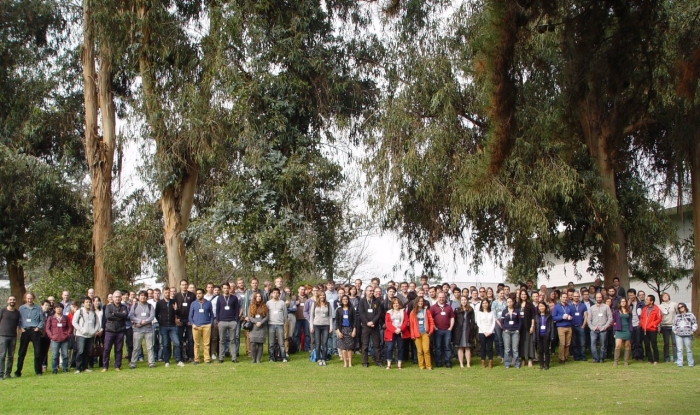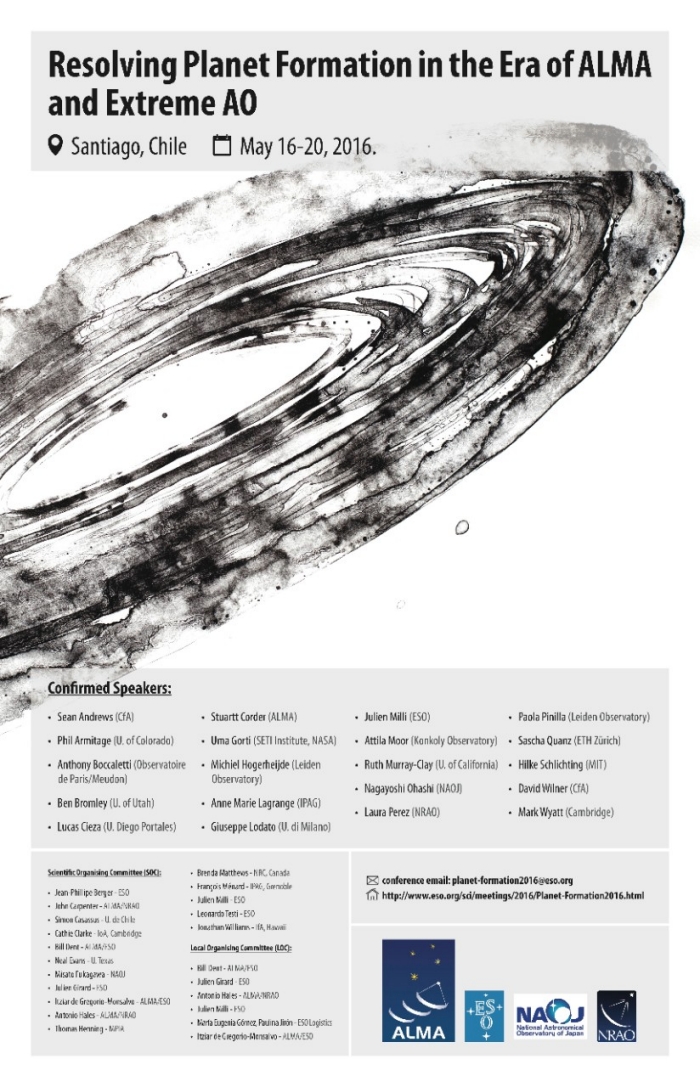Resolving planet formation in the era of ALMA and extreme AO
The final version of the program is uploaded
Santiago, Chile, May 16 - 20, 2016
Scientific Rationale
Results from ALMA Long Baseline observations and from SPHERE, GPI and other high-contrast AO instruments have given a taste of what to expect over the next few years in the fields of protoplanetary and debris disks, and planet formation. For the first time, these instruments are enabling us to observe the regions where planets form. Already we are finding gaps, holes, spiral wave patterns, and extreme asymmetries in the disks.
Substantially different structures are seen in various molecules and in different dust grains, and the first evidence for the detection of young planets is starting to emerge.
With the few-AU scales now resolvable, we can also start to unravel the complex dynamical interaction between the disks, accretion, jets and winds, and how these affect the growing planets.
Some of these spectacular features had been predicted by theory but confrontation with current models indicates clearly that we still have much to learn about what happens within 100AU of young stars.
We will host an ESO planet formation workshop in 2016 to discuss the state of the art results in this field. The program will offer a panchromatic view of the latest results, with an adequate balance between observations and theory. The timescale for this international conference is propitious, fostering discussions on how upcoming facilities (such as JWST, TMT and eELT) and advances in modeling will tackle planetary formation in the next few years.
Conference email: planet-formation2016@eso.org
Organizers: ESO, ALMA, NRAO



